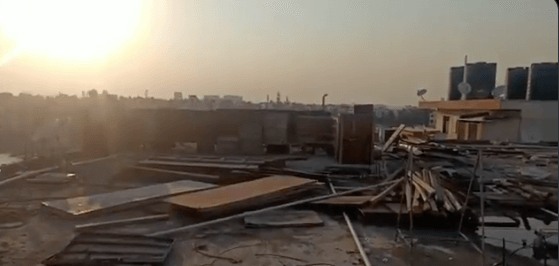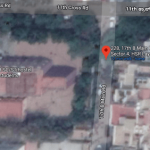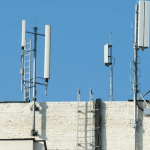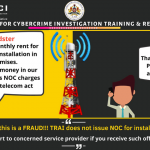
By Qamar ZJ
For the last one week, the residents living in Somasundrapalya near HSR Layout, protested the installation of illegal mobile towers in their neighbourhood. To make matters worse, the lawyer of Indus Towers insisted that they can carry out the work without permission from the Bruhat Bengaluru Mahanagara Palike (BBMP). It took many precious hours and days for the residents to get a letter from the civic body that the installation is illegal until all the requisite permissions are obtained. Once the cops received this letter, they halted the work.
Much action
When the residents realised that a tower was coming up with many antennas, they went to the terrace in a group to question the workers and asked for the permission letters. When there were none, they concluded that the installation was illegal. However, later the supervisor insisted that Indus Towers can install without any permission. However, that is not true at all after the passage of the Karnataka Installation of New Telecommunication Infrastructure Towers Regulations 2019. Now, there are 15 documents and plans to be submitted to the BBMP before the installation can be approved by the sanctioning authority. According to these rules, mobile towers cannot come up near water bodies, reserve forests (without no-objection certificate from forest department), religious places, educational institutions, heritage structures, and hospitals. If there are more antennas being installed, the height of the tower is supposed to be increased as well. The owner of the building and the cellular service provider is liable for any damages caused by inadequate safety measures. Importantly, the towers can only come up on buildings with valid permissions and Occupancy Certificates. The tower companies are to pay Rs 1 lakh to the BBMP for erecting any tower.
The issue became clear once the BBMP nodal officer, after much pressure from the residents, gave a letter that clearly stated that the towers had no permission. Much of the work was done by resident Kamesh Rastogi who coordinated with five apartment complexes, the BBMP, and the police for video footage, signature campaign and lawyer consultation. While the work has stopped now after many calls and visits to the BBMP and Bandepalya police station, the partially-built mobile tower material needs to be dismantled. “The lawyers are insisting that the 2005 norms be applied and not the 2019 laws,” says civic activist and HSR Layout resident Kavitha Reddy. “However, even the 2005 regulations clearly state that permission should be taken from the municipality. I urge the BBMP Commissioner and the Urban Development Department to issue a clarification on this issue and end the confusion created by the tower firms.”
“EMF radiation can be cancerous”
The World Health Organisation (WHO) has said that radiofrequency electromagnetic fields are “possibly carcinogenic to humans”. In 1996, WHO set up an International Electromagnetic Fields (EMF) Project to study the radiation from the energy spectrum. However, the result so far states that there were no “known adverse effects exposures below the limits recommended in the ICNIRP (1998) EMF guidelines, covering the full frequency range from 0-300 GHz.” But the research is still ongoing. “However, there are gaps in knowledge still needing to be filled before better health risk assessments can be made,” states the project’s website.
Indian won a case in Supreme Court against tower firm
In 2017, one Indian won a case in the Supreme Court against a tower firm for causing him cancer due to the exposure from the antennae. Even the telecom department has continued to maintain that the tower radiation is harmless by citing studies from international agencies, and also contending that the Indian rules are 10-times stricter than those abroad. However, the reality is that there are many advanced countries, such as the US, UK, and Australia, who have far stricter norms than that of India. India needs to classify EMF radiations or electrosmog as an air pollutant. Read this story by an expert in Down To Earth magazine to get the big picture.



